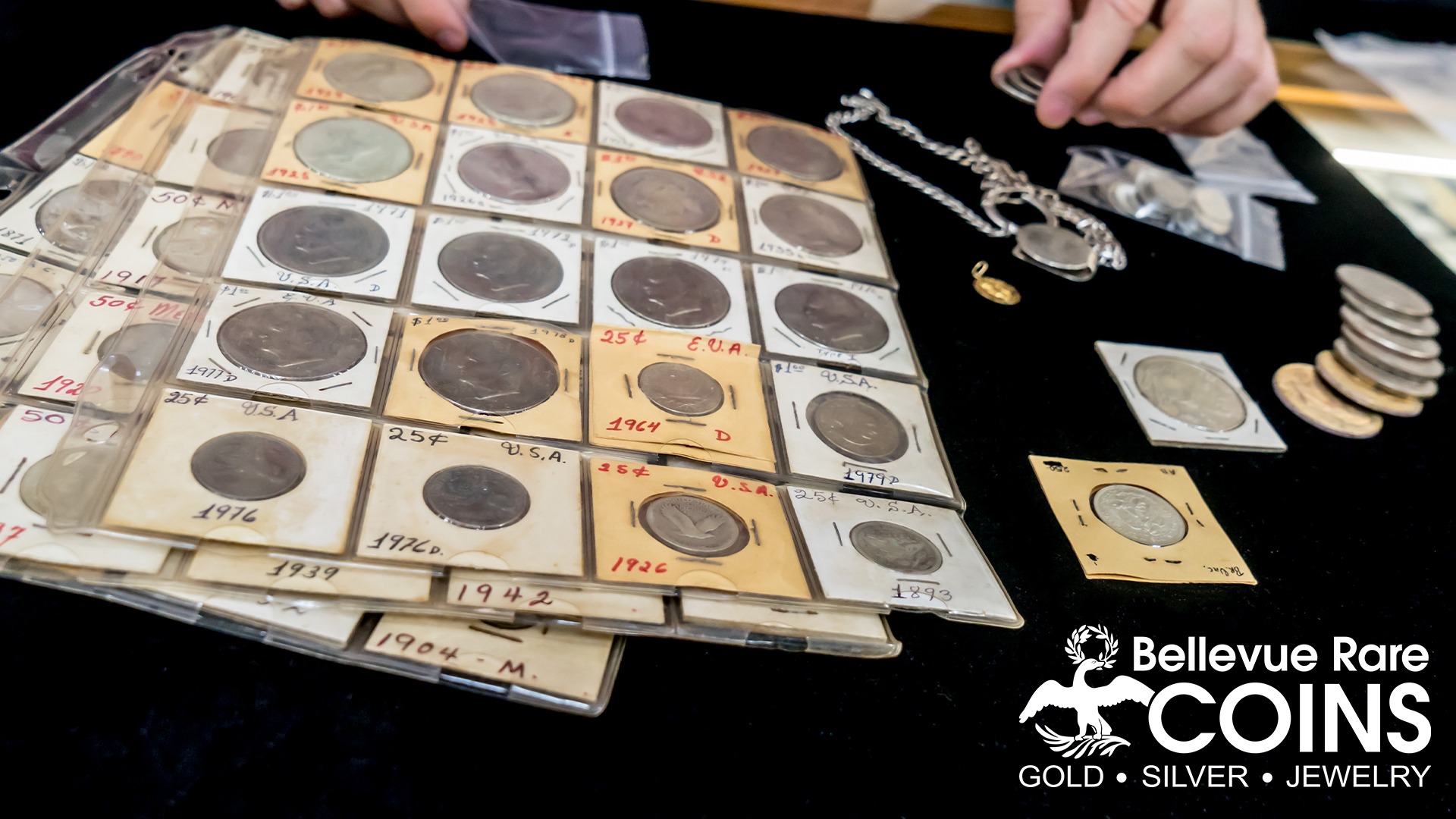Bellevue 425-454-1283 · Lynnwood 425-672-2646 · Issaquah 425-392-0450 · Tacoma 253-328-4014

When you purchase physical bullion, you will pay slightly more than the cost of the metal’s spot price.
What is the reason for this price mismatch? The difference is called the “premium”, and it can make a substantial difference for bullion investors.
What is a bullion premium, exactly? This guide will explore the topic in-depth.
A premium is the amount over spot that you pay for a bullion item. It’s essentially the mark-up over the price of the raw metal.
For instance, if silver is $20 per ounce, you might pay $23 per ounce for a silver bar, or $230 for a 10-oz silver bar.
When you look up the price of gold, that’s the spot price. However, that doesn’t mean that you can actually buy physical gold for that price. You’ll always have to pay a small premium, which varies based on the type of item and market conditions.
Bullion premiums over spot cover the cost of refining, minting, distribution, and a profit for the dealer or dealers involved.
Prices for precious metals are determined by “spot” prices, which are set on an open market. Bullion spot markets function similarly to stock markets, bringing buyers and sellers together to make deals.
However, spot prices are the price for raw, refined metal in bulk quantities. Spot prices are accessed by massive buyers who trade the metal, and by mints who purchase bulk quantities of metal to mint coins or bars.
In other words, everyday bullion investors don’t have access to spot prices – they must pay premiums to obtain refined and minted bullion products.
Premiums do include profit margins for the dealer, but that’s not the only influence. Bullion premiums account for several factors:
In other words, if you’re paying $5 over spot for silver, that doesn’t mean that the dealer is pocketing that $5. In fact, the dealer themselves may be paying $1-$3 over spot for the items themselves.
There are usually several parties involved. For instance, before an American Silver Eagle makes its way to your stack, it might pass through:
Oftentimes, physical precious metals trade for significantly more than spot prices. We’ve seen this phenomenon for the last several years, since 2020 or so.
There’s no set formula for bullion premiums. They are determined by market conditions and demand.
When demand is high, premiums are high. When demand is lower, premiums are lower.
Each individual bullion product will have a different premium, as well.
For instance, a generic 1oz silver round might sell for just a few dollars over spot, but an American Silver Eagle might fetch $10-$13 over spot at times.
Premiums can fluctuate significantly over the years, based on demand. Several years ago, American Silve Eagles were only $3-$5 over spot – today, premiums are 2-3x that amount.
Overall, premiums on bullion items are influenced by:
Put simply, premiums mean you get less ounces of precious metal for each dollar you spend.
Thus, if your goal is to maximize the amount of ounces you acquire, sticking to low-premium items makes sense. Low-premium items typically include:
On the other hand, if you prefer widely recognized coins, like American Silver Eagles, it’s worthwhile to pay a premium.
Keep in mind that you’ll be able to recapture some — but not all — of the premium once you sell. For instance, if you pay a $6 premium when you buy, you might get a $2-3 premium over spot when you sell. The difference between buying and selling prices covers the profit margin for the dealer.
Bullion premiums are a reality of buying physical bullion. They are unavoidable.
Premiums fluctuate over time, so it’s wise to keep an eye on things. If premiums are getting very high on certain items, some investors prefer to buy lower-premium items, like generic bars.